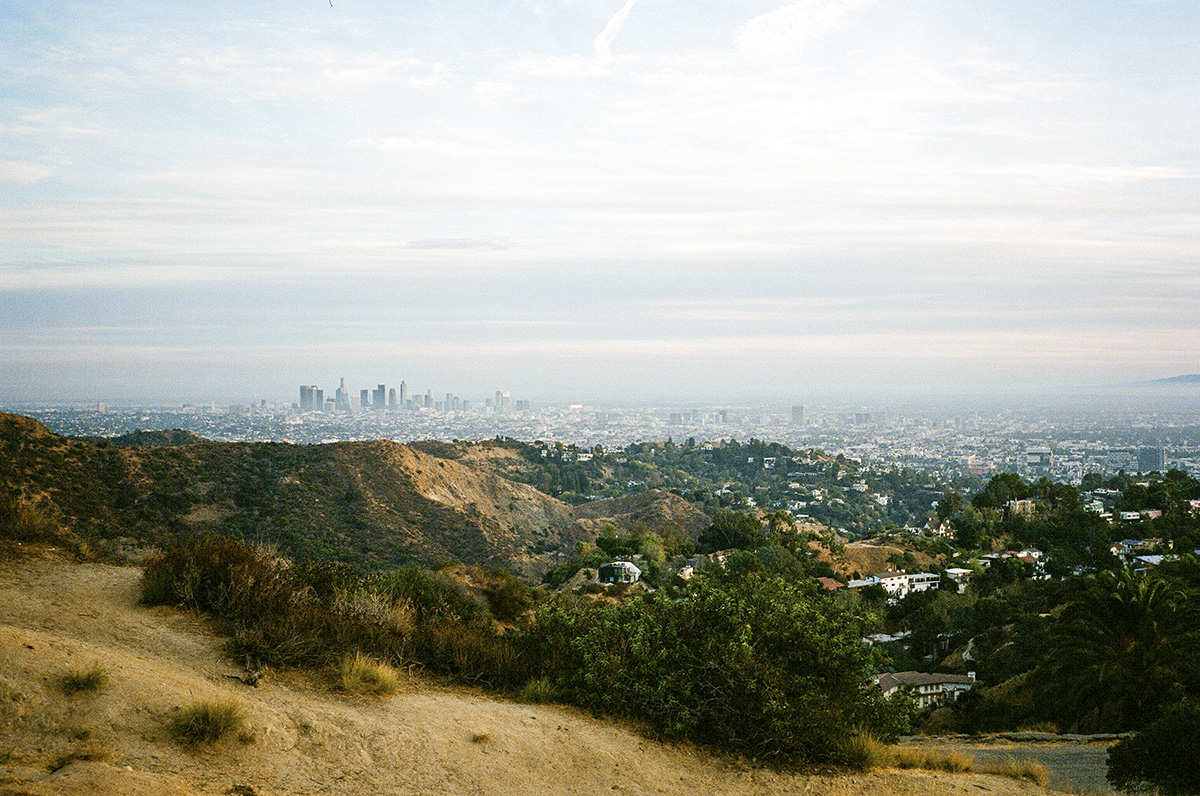Study finds planting trees, employing reflective surfaces could save LA lives

A hill overlooks the Los Angeles skyline. A recent study co-authored by UCLA researchers was able to quantify the impact of implementing multiple heat-fighting measures on human mortality in LA. (Daily Bruin file photo)

By Leila Okahata
April 17, 2022 10:31 p.m.
Researchers found that approximately 1 in 4 lives lost to extreme heat could be saved in Los Angeles if the county planted more trees and utilized more reflective surfaces.
According to the study published March 24, extreme heat in urban areas is the leading weather-related killer in the United States. Cities such as LA experience disproportionately higher temperatures because of a high number of manmade structures, roofs and pavements that absorb and retain heat, said David Sailor, a co-author of the study and a professor in geographical sciences and urban planning at Arizona State University. This increased warming is known as the urban heat island effect, he added.
Planting more trees that provide shade in addition to constructing roofs and pavements that reflect heat can help cool urban heat islands, according to the study.
[Related: California heat waves break records, set dangerous precedent]
To carry out the study, Sailor said the researchers created models of LA based on various historic summer heat waves. They then ran simulations with varying levels of tree coverage and reflective surfaces to determine the number of lives saved, he said. In California, extreme heat led to 3,900 deaths between 2010 and 2019, according to the study.
The results from the simulations showed that approximately 1 in 4 lives lost to extreme heat could be saved if tree coverage increased to 40% and reflectivity of all roofs and pavements increased to 45% and 35%, respectively. LA’s existing tree coverage is 16%, and existing reflectivity of roofs and pavements are 17% and 10%, respectively.
Results also showed that temperatures can decrease by 2 to 3 degrees Celsius if these local actions are implemented. Moreover, climate change-induced warming could be delayed by 43 years, meaning the climate in 2063 would be similar to that of 2020, according to the study.
“When you think about residential energy consumption, commercial energy consumption, the value of human life, medical costs and so forth, even a single degree is a huge societal benefit if we can reduce the city’s temperature by 1 degree,” Sailor said.
This research is the first of its kind in estimating how many lives can be saved based on these urban modifications, according to the study. Having exact numbers is important when communicating with policymakers, said Bharat Venkat, an assistant professor at the Institute for Society and Genetics and director of the UCLA Heat Lab.
“If I say to policymakers, ‘Trees are good,’ sometimes that works,” he said. “But if you’re able to say, ‘Here’s the numbers based on modeling. We can estimate that we’ll save X number of lives,’ … that’s a more powerful argument.”
[Related: Luskin Center for Innovation investigates California’s response to extreme heat]
It is important to take actions, such as those described in the study, at the local level, said Edith de Guzman, a co-author of the study and a doctoral student at the Institute of the Environment and Sustainability, in an emailed statement. The global scale of climate change can be intimidating, but the effects of it are experienced locally through extreme weather events, such as heat waves, and can be mitigated at the local level, she added.
“Whether that means planting a tree, taking public transportation, eating lower down the food chain or writing to our representatives, local-level action is doable, tangible, and it can feel much more measurable,” she said.
Because LA County has so many different neighborhoods – each with their own microclimate – it is important to look at each community’s experiences with heat before making decisions and changes, Venkat said. He added that, for example, the experience in Santa Monica, which is in western LA, would be different from the experience in Watts, which is in southern LA.
Areas of the county with higher average summer temperatures, such as southern and eastern LA, also had some of the least tree coverage compared to the rest of the county, according to data compiled by the LA Times. The same data found that California’s poorest neighborhoods experienced temperatures that were, on average, up to 5 degrees Fahrenheit hotter.
“You have to look at what’s happening street by street, neighborhood by neighborhood, community by community to understand how climate change comes to roost – how it actually impacts people’s lives – because it’s not going to be the same,” Venkat said.
De Guzman said it is important for policymakers and urban planners to recognize that the propositions made in this study may not resonate with every community.
“These types of changes have to be made with sensitivity and in partnership with communities,” she said. “We need to listen to desires … of the communities that we are hoping to help mitigate the issue of heat with and to be humble about different priorities and different preferences.”


